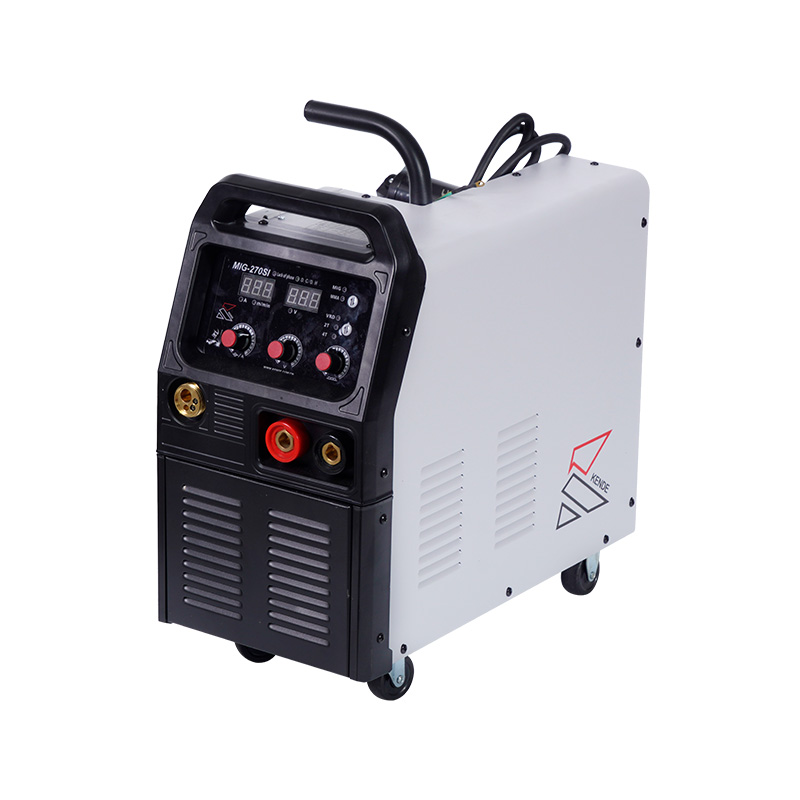Email: [email protected]
 2025.10.27
2025.10.27
 Industry News
Industry News

Shipping welding machines internationally requires careful planning and coordination. For suppliers from welding machine factories, ensuring that equipment reaches its destination safely and on time is essential. The process involves several key steps, including packaging, transportation, customs compliance, and risk management. Understanding these steps helps buyers and suppliers navigate international shipping efficiently.
Packaging for Safe Transport
Proper packaging is the critical step in shipping welding machines. These machines are often heavy, contain electrical components, and are sensitive to impact or moisture. Welding machine factories typically use durable materials such as wooden crates, reinforced boxes, and pallets to secure the machines during transit.
Inside the packaging, protective materials such as foam, moisture-resistant wraps, and anti-corrosion coatings are commonly applied. These measures prevent scratches, dents, or damage to internal components. Proper labeling and secure fastening also help maintain stability during handling and transportation.
Transportation Methods
Choosing the appropriate transportation method depends on the size, weight, and urgency of the shipment. Air freight is faster and suitable for smaller or urgent orders but can be more costly. Sea freight, on the other hand, is a cost-effective option for larger or heavier welding machines, though transit times are longer.
Some welding machine factories offer multimodal shipping solutions, combining sea, air, and land transport to balance cost, speed, and convenience. Selecting the right method ensures timely delivery and helps avoid unnecessary delays.
Navigating Customs and Documentation
International shipments must comply with customs regulations in both the exporting and importing countries. Suppliers from welding machine factories must prepare accurate documentation, including invoices, packing lists, certificates of origin, and shipping labels.
Certain countries require additional certifications, such as safety compliance or electrical standards. Experienced factories often collaborate with freight forwarders or customs agents to manage these requirements efficiently. Accurate documentation reduces the risk of delays, fines, or shipment confiscation.
Insurance and Risk Management
Shipping welding machines overseas carries risks, including damage, loss, or theft. Many welding machine factories provide insurance options to protect buyers against these risks. Coverage may include full replacement value or partial compensation, depending on the shipping agreement.
In addition to insurance, careful handling and secure packaging contribute to risk management. Using reliable carriers and monitoring loading and unloading processes also helps protect the equipment throughout the journey.
Tracking and Communication
Modern logistics systems allow suppliers to offer real-time tracking for international shipments. Buyers can monitor the progress and location of their welding machines, helping them plan installation or project schedules effectively.
Clear communication between suppliers and buyers is equally important. Providing updates on shipment status, potential delays, or customs requirements ensures transparency and builds trust. This coordination can prevent misunderstandings and allows timely resolution of issues.
Preparing for Delivery
Upon arrival, welding machines must be carefully inspected before acceptance. Checking for any visible damage, verifying the documentation, and testing functionality ensures that the machines meet the expected standards. Some welding machine factories provide installation guidance or support to help buyers set up the equipment correctly.
Shipping welding machines internationally involves multiple steps, including robust packaging, careful selection of transportation, compliance with customs regulations, insurance coverage, and ongoing communication. Suppliers from welding machine factories who follow these practices help ensure that their products arrive safely, efficiently, and ready for use. Understanding the process allows buyers to coordinate effectively and manage their projects with confidence.